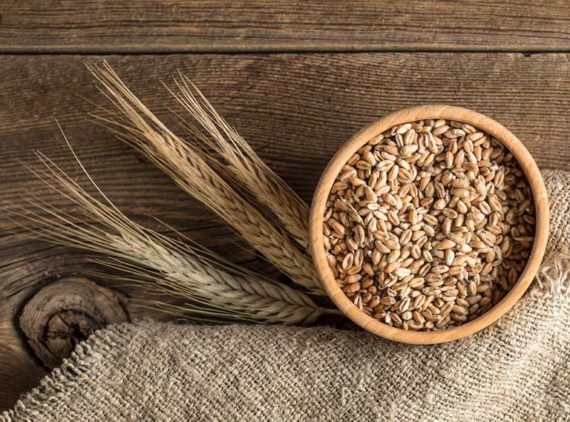
In the past years, the consumption of organic grain and/or multigrain bakery products has increased by about 60%.
This development is not the result of institutional campaigns but a spontaneous process.
The most used products for producing and mixing flours can be grouped into two categories:
- The first group includes various types of grains, such as durum wheat, soft wheat, rye, Kamut, spelt, barley, oat, buckwheat and corn. With these grains, you can obtain wholemeal and non-wholemeal flours suitable for making bread, dried pasta, fresh pasta, biscuits, desserts, pizza and other standard products.
- The second group includes a series of legumes, such as peas, chickpeas, lentils, broad beans, beans, etc.
The flours obtained after grinding these legumes are used for producing dry flours, with which you can make soups, hummus, or crackers. Mixed with other flours, you can produce alternative food or even substitutes (vegan steaks) thanks to their high protein content.
The consumption of wholemeal and vegan products is on the up
There are now more wholemeal and vegan products on supermarket shelves than ever before. These products are getting more and more popular, even at our table. This increase in consumption is due to two factors:
- Health factor: today, wholemeal and vegan products are top-rated. Major food companies have even included them in their production lines and marketing campaigns.
- Multi-ethnic factor: our society is becoming more and more multi-ethnical, and the market is adapting to this change. Ethnic groups that cluster in the same environment bring their values, lifestyle, tradition and culinary habits together.
Grinding grains and legumes: how can we obtain the best ground products with the best extraction percentage?
Both grains and legumes have different shapes, hardness and specific weight.
The art of grinding consists in obtaining the best ground products with the best extraction percentage.
That’s why the characteristics of the rollers must be suitable for the product to grind. These parameters are essential for producing flours with different characteristics.
Here is a list:
- Number of grooves per cm: this parameter determines the semolina size and the amount of flour produced during grinding;
- Operating angle: this parameter determines the percentage and size of the extracted semolina;
- Operating position: D-D – S-S – D-S – S-D. This parameter determines the percentage of semolina or flour produced and/or the size of the bran resulting from grinding;
- Tilting of the grooves: this parameter determines the cutting angle when the grooves intersect to produce more or less flour;
- Grinding rating between rollers: fluted rollers 1:2.5; smooth rollers 1: 1.25. This parameter determines the size of the coarse bran when fluted rollers are used. This parameter on smooth rollers is important when you want to change damaged starch values, which go hand in hand with water absorption. Increasing damaged starch increases the water retention capacity of the flour;
- Peripheral speeds of the fast roller: this parameter increases or decreases the production capacity of every grinding step.
Based on all these parameters, you understand how complicated it is to choose the perfect configuration of the rolling mill.
Moreover, the operator (miller) has only one possibility to calibrate the machine.
FLEXY-MILL is Omas Industries’ revolution for quick, flexible and quality grinding
We at Omas have gone beyond expectations to meet the requirements of millers and the grinding market.
We made the four grinding rollers independent, removing the pulleys and idler belts that allowed the two pairs of cylinders to grind.
Thanks to permanent magnet torque motors coupled with inverters, you can adjust every roller and thus modify the parameters that were impossible to change before.
With our Leonardo rolling mill, the miller can, during the grinding process, modify the following grinding parameters:
- Increase or decrease the peripheral speed of both grinding rollers;
- Change the grinding ratio;
- Change the rollers’ operating position;
- Adjust the grinding gap;
- Create grinding recipes that can be saved in the machine or system’s control PLC.
All these operating parameters impact grinding operations as much as the gap adjustment.
Now that you can change them all, grinding will be quicker and more flexible. This way, the operator can adapt the mill to various types of grains and/or legumes without compromising grinding performance and the quality of the finished product.
 Sergio Dipasquale
Sergio Dipasquale
sergio@omasindustries.com
Chief Milling Technologist



